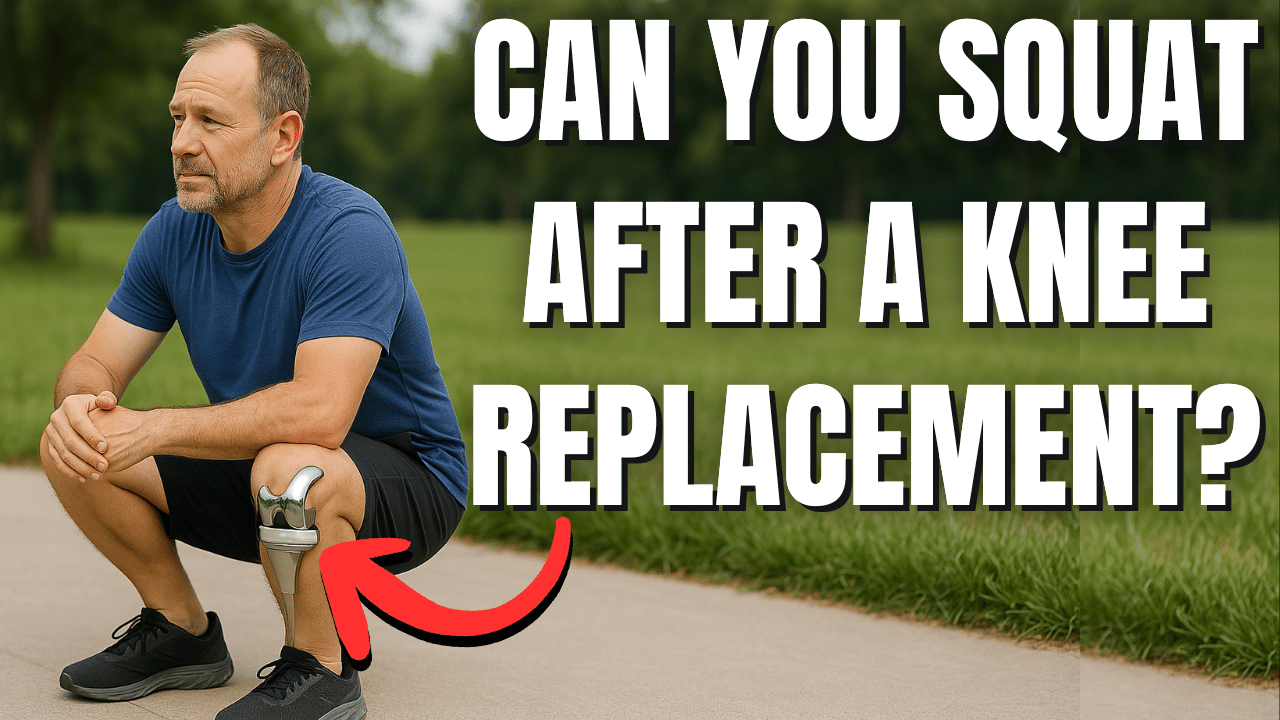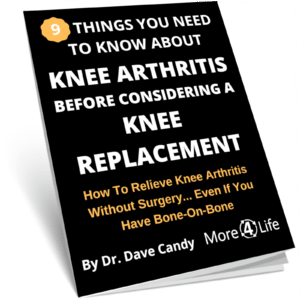Many people wonder: "Can you squat after a knee replacement?"
Fortunately, you CAN squat after a knee replacement if you follow the proper steps. Watch the video to learn how to squat safely after a knee replacement.
When Is It Safe to Squat After a Knee Replacement?
In the first few weeks, you’ll likely use your surgical leg to help stand from a chair.
But for exercise squats, your incision should be healed and you should have at least 90 degrees of knee bending. This ensures your knee is ready for shallow bodyweight squats without stressing the joint.
Early Exercises to Prepare for Squats
Before squatting, work on range of motion and flexibility. Helpful exercises include:
- Heel slides – improve bending at the hip, knee, and ankle.
- Calf stretches – improve knee straightening and ankle flexibility.
- Hip rotation stretches – lying on your back, let your knees fall out to the sides.
- Clamshells – strengthen your glutes and hip external rotators.
These exercises build the foundation for safe squatting later in recovery.
Starting With Bodyweight Squats
Once you reach 90 degrees of knee bending and your incision heals, begin with sit-to-stand exercises. Use a sturdy chair:
- Sit down, then lean forward and press your heels into the floor.
- Stand up, then reach back and sit down again.
- Repeat for strength and control.
This safe method allows you to build strength without losing balance.
Progressing to Deeper Squats
After you can do three sets of 10 sit-to-stands, move on to squats lower than chair level.
Use a counter for balance as you gradually increase your squat depth.
Avoid letting your knees collapse inward and keep driving them slightly outward.
With time, most people reach parallel squats around three months post-surgery.
Adding Weight Safely
Once you can squat to parallel, it’s safe to add light weights. Start with a dumbbell or kettlebell held in front of you. Begin with light resistance and progress gradually.
The exact weight depends on your body size, but listen to your body and avoid sharp pain. Muscle soreness is normal, but stabbing joint pain is not.
Can You Do Deep Squats After Knee Replacement?
Deep squats are possible, but not everyone can achieve them. They require high mobility in the knees, hips, and ankles.
If you can squat below parallel without pain, it’s safe to do so. However, many people are limited by their prosthetic type, old kneecap mechanics, or arthritis in other joints.
It’s perfectly fine if you can't go that low.
Conclusion
So, can you squat after a knee replacement?
Absolutely.
Start small, progress gradually, and focus on form. With the right approach, squatting can be a safe and effective exercise after knee replacement surgery.
Need Help to Recover From A Knee Replacement?
If you live in St. Louis and need help to recover from a knee replacement surgery, tap the button below to request an appointment.



